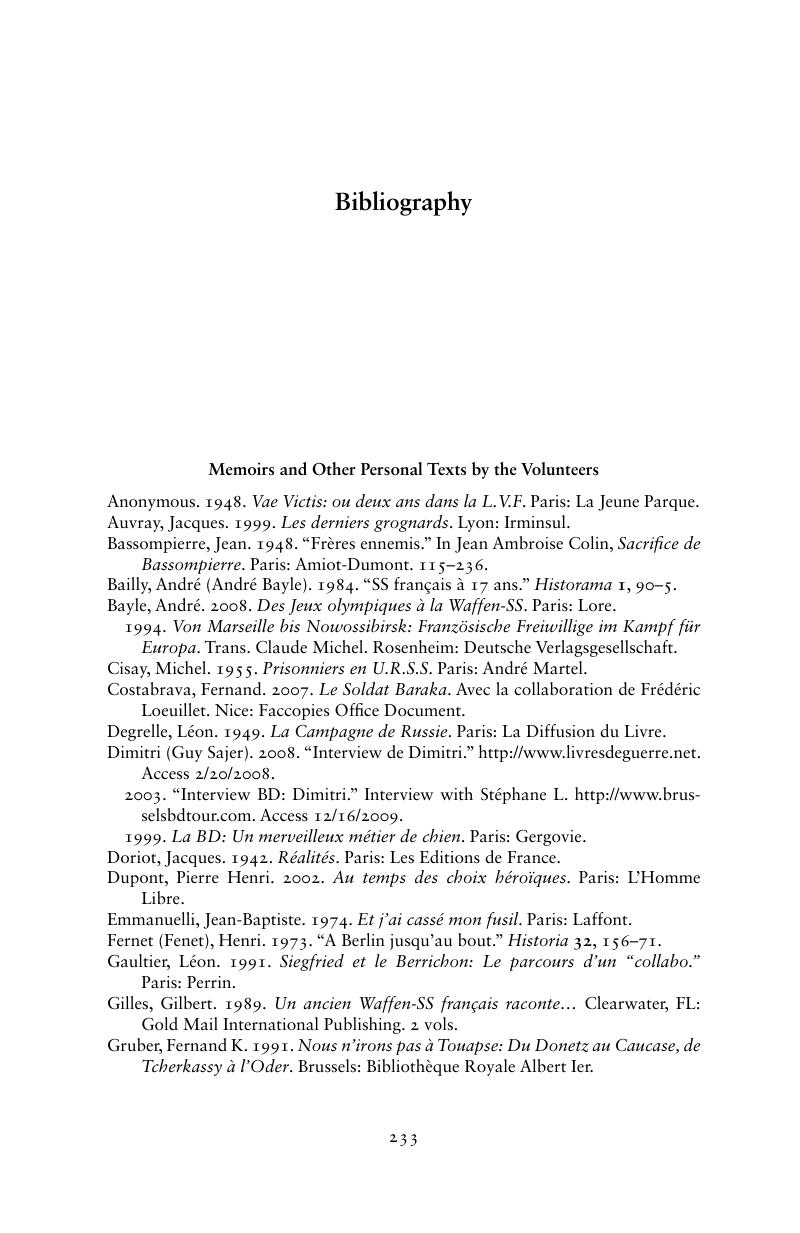Book contents
Bibliography
Published online by Cambridge University Press: 17 November 2010
Summary

- Type
- Chapter
- Information
- The French Who Fought for HitlerMemories from the Outcasts, pp. 233 - 250Publisher: Cambridge University PressPrint publication year: 2010

